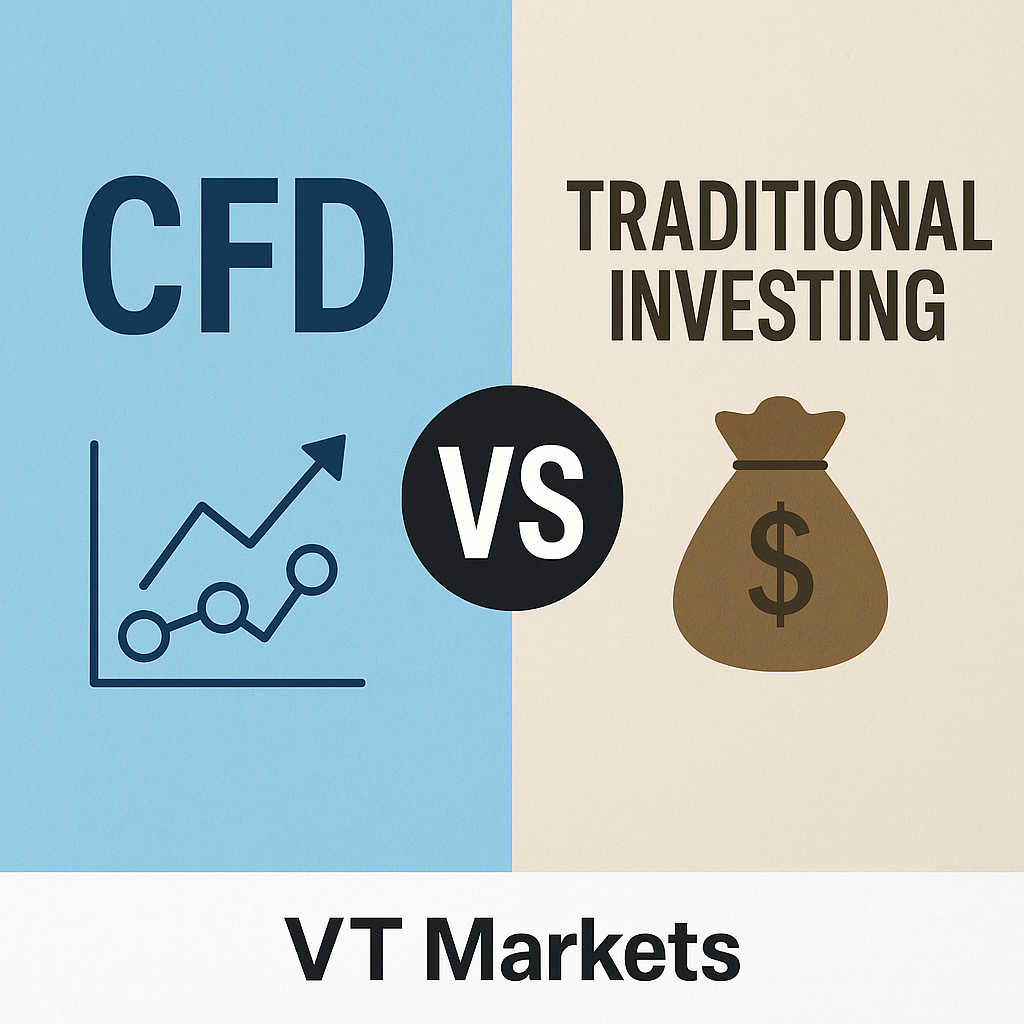
CFD vs Traditional Investing: Which Is Suitable For You?
When it comes to growing your wealth, there’s no shortage of options. But one question often pops up: “Should I go with CFD trading or traditional investing?” Both have their place in the financial world, but they serve very different purposes depending on your risk appetite, time commitment, and financial goals.
If you’re still exploring your path to financial freedom, this guide will help you clearly understand the difference between CFD trading and traditional investing, so you can make smarter, more confident decisions.
⚖️ What is CFD Trading?
Contracts for Difference (CFDs) let you speculate on the price movement of financial assets—without actually owning them. You can trade both rising and falling markets. That’s right, you can profit whether prices go up or down, depending on your position. CFD brokers like VT Markets offer platforms that let you trade forex, indices, commodities, stocks, and even crypto from one account.
Read this article to learn more about CFD Trading
Feature CFD Trading Explained Ownership You don’t own the asset Market Direction Long (Buy) or Short (Sell) options Leverage Access to larger trades with smaller capital Duration Best for short to medium-term strategies Instruments Forex, indices, stocks, crypto, commodities
🏦 What is Traditional Investing?
Traditional investing is about buying assets—such as stocks, mutual funds, or bonds—and holding them to grow over time. It’s focused on steady, long-term growth. Investors typically earn returns from dividends, interest, or price appreciation.
Feature Traditional Investing Breakdown Ownership Full ownership of assets Market Direction Profit only when prices rise Leverage Rarely used Duration Long-term (months to years) Instruments Stocks, ETFs, bonds, mutual funds
💰 Key Differences Between CFD and Traditional Investing
1. Capital Requirements & Leverage
CFD traders can open larger positions using leverage (like 1:30), which means you need less upfront capital. Traditional investing, on the other hand, typically requires full payment for each asset.
2. Risk & Volatility
CFDs can offer high rewards—but they come with higher risk, especially due to leverage. Traditional investments tend to have lower short-term volatility but still carry risk.
3. Trading Speed & Flexibility
CFD trading is ideal for those who want speed and flexibility. You can open and close trades in minutes or hours. Traditional investing is slower and more focused on long-term value.
4. Cost & Fees
CFDs may involve spreads and overnight holding costs. Traditional investing can incur brokerage commissions, fund management fees, and custody charges.
Category CFD Trading Traditional Investing Ownership No Yes Profit Potential Both rising and falling markets Only rising markets Fees Spreads, overnight fees Broker fees, fund management fees Leverage Yes Rarely Suitable For Short-term, active traders Long-term, passive investors
🧠 Which One Is Right for You?
Ask yourself:
- Do I enjoy being hands-on and analysing short-term market moves?
- Or do I prefer to invest and let my money grow quietly over time?
Choose CFD trading if:
- You’re comfortable with higher risk
- You want the ability to trade both up and down markets
- You like a more active role in your investments
Choose traditional investing if:
- You prefer lower risk and long-term stability
- You want ownership of real assets
- You aim for steady returns through dividends and growth
Many traders and investors use a mix of both strategies to balance risk and return.
❓FAQ: CFD vs Traditional Investing
Q: Can I use both CFD trading and traditional investing?
Yes! Many people combine both to diversify their portfolio—CFDs for short-term opportunities, and traditional investing for long-term stability.
Q: Is CFD trading suitable for beginners?
Yes, but start with a demo account. Leverage can boost profits but also losses, so learning the ropes is key.
Q: Will I receive dividends in CFD trading?
No direct dividends, since you don’t own the asset. But brokers may apply dividend adjustments for long positions.
Q: Which is more risky?
CFD trading usually carries more risk due to leverage and market exposure. Traditional investing tends to be less volatile.
Q: Do I need more capital to start traditional investing?
Typically yes, since you pay the full value of the asset with no leverage.
🏁 Final Thoughts on CFD vs Traditional Investing
When comparing CFD vs traditional investing, there’s no one-size-fits-all answer. Each has its strengths depending on your style, timeframe, and goals. CFD trading is fast, flexible, and dynamic—but it’s not for the faint-hearted. Traditional investing is stable, time-tested, and better suited for building wealth slowly.
Whether you choose one or both, VT Markets is here to support your journey with reliable tools, educational resources, and powerful trading platforms.
👉 Ready to try both? Start your CFD or traditional investing journey with a VT Markets demo account today!







